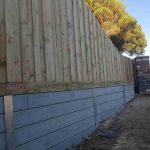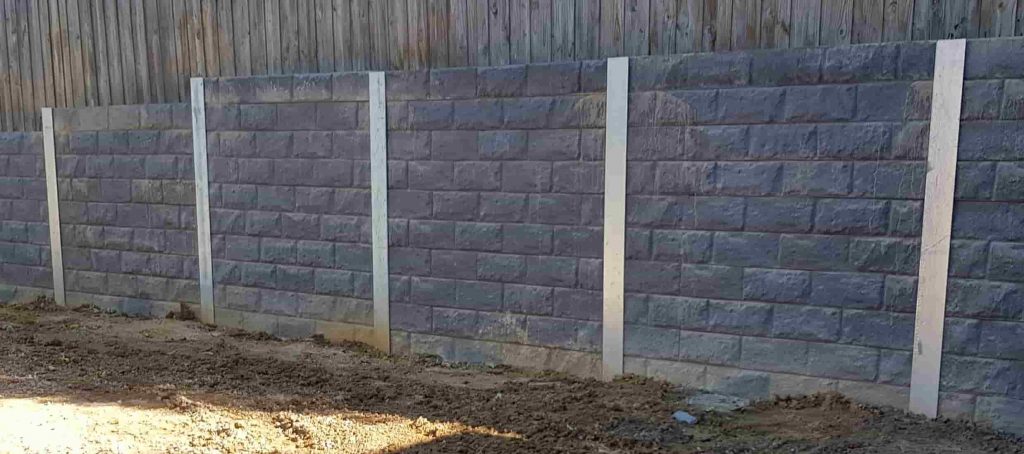Introduction
Building a retaining wall isn't just about stacking stones or pouring concrete; it's a calculated undertaking that needs expertise, preparation, and the best materials. Retaining wall builders play a vital role in ensuring your structure stands strong versus the test of time and nature. Whether you're contemplating a simple wood sleeper wall or a robust concrete solution, understanding the subtleties of keeping walls can conserve you time, cash, and headaches down the roadway. This short article will dive deep into the secrets to a long-lasting structure, providing insights from retaining wall contractors and installers who understand the ins and outs of this building art.
Retaining Wall Contractor: Comprehending the Basics
What is a Maintaining Wall?
A retaining wall is created to keep back soil and manage modifications in elevation. These structures are important in landscaping, especially on sloped homes. They prevent disintegration and develop functional acreage by holding back earth.
Why Do You Required a Keeping Wall?
If you're dealing with high slopes, flooding concerns, or merely wish to improve your garden's aesthetic appeal, a retaining wall might be your best choice. They can also:
- Prevent soil erosion Create level surfaces for gardening Enhance home value Improve landscape design
Types of Maintaining Walls: What's Best for You?
Concrete Sleeper Walls
Concrete sleepers are pre-cast panels typically used in contemporary building and constructions. Their resilience and strength make them a perfect choice for lots of homeowners.
Advantages of Concrete Sleepers
- Long-lasting Resistant to weather elements Minimal maintenance
Disadvantages of Concrete Sleepers
- Higher preliminary cost Requires heavy equipment for installation
H Beam Retaining Walls
H beam walls make use of steel beams driven into the ground to support horizontal retaining walls installation panels. This style is particularly reliable in high-load areas.
Pros of H Beam Solutions
- Exceptional strength Suitable for high-stress applications
Cons of H Beam Solutions
- Corrosion capacity if not appropriately treated More complex installation process
Wood Sleeper Walls
Wood sleeper walls use a rustic beauty however require more maintenance than other options.
Pros of Wood Sleepers
- Aesthetic appeal Environmentally friendly material
Cons of Wood Sleepers
- Susceptible to rot and pests Requires routine maintenance
Timber Sleeper Walls
Similar to wood sleepers however normally made from treated wood designed for longevity.
Benefits of Wood Sleepers
- Affordable choice Easy to install
Drawbacks of Lumber Sleepers
- Limited life expectancy compared to concrete or stone Vulnerable to severe weather conditions
Stone Keeping Walls
Stone walls provide exceptional beauty and strength but can be labor-intensive.
Advantages of Stone Walls
- Timeless aesthetic Very resilient when constructed correctly
Disadvantages of Stone Walls
- High labor expenses Requires proficient craftsmanship
Choosing the Right Materials for Your Wall
Factors Affecting Material Selection
Budget: How much are you willing to spend? Durability: Think about regional weather conditions. Aesthetics: What look do you want? Functionality: Will it keep back heavy soil?Planning Your Retaining Wall Project
Step 1: Style Considerations
Visualize what you desire your keeping wall to attain-- be it practical or ornamental functions. Sketch out concepts before speaking with a professional keeping wall builder.
Step 2: Acquire Proper Permits
Regulations vary by area; guarantee you have all necessary authorizations before starting construction.
Step 3: Site Preparation
Prepare your site by clearing debris and leveling surface areas as needed. Correct preparation can conserve significant time during construction.
The Role of Retaining Wall Contractors
What Does a Retaining Wall Contractor Do?
A knowledgeable contractor examines website conditions, recommends products, manages construction, and guarantees compliance with regional codes.
How to Pick a Reputable Contractor?
Look for credentials. Read reviews. Ask for references. Compare quotes.Installation Process: Step-by-Step Guide
1. Digging the Trench
The initial step involves digging a trench where your retaining wall will sit-- this makes sure stability.
2. Leveling Base Material
Adding gravel or crushed stone helps provide drain while keeping water far from the wall structure.

3. Laying First Course
For concrete blocks or stone walls, this step is vital as it sets the positioning for subsequent layers.
4. Including Drain Solutions
Incorporating drain pipelines behind the wall prevents hydrostatic pressure buildup which could lead to failure.
5. Backfilling
Carefully backfill around the wall utilizing proper products to decrease pressure on it while permitting appropriate drainage.
Maintenance Tips for Long-lasting Maintaining Walls
Regular assessment is crucial! Here's how you can maintain your maintaining walls:

Common Errors in Building Retaining Walls
Neglecting drainage options can cause water damage. Skipping permits resulting in legal difficulties later. Inadequate foundation depth leading to instability. Poor material options based on looks rather than function.FAQ Section
Q1: The length of time does it take to develop a keeping wall?
It generally takes one week or longer depending upon size and complexity.
Q2: Can I develop my own maintaining wall?
Yes, but it's extremely suggested that you consult with professionals.
Q3: How deep should my structure be?
A foundation ought to generally be at least one-third the height of your wall.
Q4: What avoids soil from pressing over my maintaining wall?
Proper drain systems help reduce hydrostatic pressure.
Q5: Can I plant greenery near my keeping wall?
Yes! Simply make sure roots won't jeopardize structural integrity.
Q6: Is employing a specialist expensive?
While expenses vary greatly, buying proficiency settles long-term through quality construction.
Conclusion
Building a trusted keeping wall isn't simply about looks; it has to do with creating lasting structures that persevere against natural forces while boosting property worth and use. Armed with understanding about products like concrete sleepers, wood sleepers, H beams, wood sleepers, and stone choices-- together with insights into proper planning and installation-- you'll have what you require to make informed choices about your project.
Whether you're thinking about do it yourself efforts or working with skilled professionals like skilled keeping wall home builders or specialists, understanding each element talked about here will pave your method towards success in constructing an enduring retention solution that fulfills both practical requirements and visual desires!